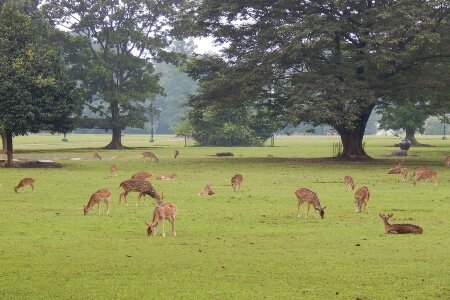How to Find a Good Deer Hunting Stand Location
Our experts like to share product recommendations with you and hope you like them! Just to make you aware, CatchThemEasy may collect a small share of sales or other compensation from the links on this page.

The first step to finding a proper location to place your tree stand, ground blind or tripod stand is to learn how to recognize, and then scout, good deer habitat. Then, you need to learn how to recognize the favorite types of foods that the deer populations in your area prefer. Then, you need to learn how to recognize and interpret deer sign. Once you have perfected all of those skills, finding a proper stand location consists of locating their bedding areas and their favored food sources along with the trails that they use to travel from one location to the other and then set up along one of those trails.
First, Understand Deer Movement
However, although this may sound like a simple process, deer habitat often covers a large range and thus, simply walking out into the woods and looking around for a bit is not a productive use of your available time. Therefore, in order to locate Whitetail Deer in unfamiliar territory, you first needed to understand deer habitat. So, with that in mind, it is helpful to imagine yourself as a deer and then to be aware that there are only four things on a deer’s mind at any given time which consist of:
- Finding a readily available food source
- Finding a safe place to sleep
- Avoiding predators
- Finding a suitable mate during the breeding season
Bedding
But, why start with bedding areas instead of food sources you might wonder and, the answer to that question is because suitable bedding habitat is the more scarce of the two resources in any given habitat. Therefore, because a prime bedding area is prime real estate, the deer will return there over and over again at the end of each day. In addition, it should be noted that mature bucks spend more time in their bedding area than any other location because dense cover provides shelter from both hunters and other predators.

Prime bedding areas are usually far more clearly defined than food sources and thus, first locating bedding areas helps you to narrow down the deer's location. So, what constitutes a prime bedding area? Well, the answer to that question is thick cover and we do mean thick! In fact, all deer, and especially mature whitetail bucks, require security in their choice of bedding areas so that they can sleep soundly without feeling threatened by predators. Thus, they specifically look for areas of thick cover where they feel safe.
Feeding
Then, after you have located and identified one or more bedding areas, your next step is to locate and identify the feeding areas. However, in order to accomplish this, you first need to understand what deer like to eat. If you know the location of all of the food sources in the area you intend to hunt in relation to the position of the bedding areas, then you can extrapolate the likely routes of travel to and from the bedding and feeding areas by taking into account the terrain, the location, and type of cover available in the area.

Trails Used
The best strategy for getting a shot at a trophy buck is to find both his bedding and his feeding areas in places where you also find rubs and scrapes along frequently used trails and then, set up near the bedding area on one of the trails leading to a feeding area. However, many avid whitetail deer hunters prefer to hunt overlooking favored food sources instead of watching the trails leading to these areas and this strategy is often successful as well; especially in areas where agricultural crops such as corn or soybeans are grown since the deer will often enter fields containing these crops during the early morning and late evening hours.
Also, because carbohydrates are exceptionally difficult to come by in nature and are highly prized by most animals, mast crops such as white oaks that are dropping acorns as well as wild grape and muscadine vines and apple, peach, pear, and persimmon trees are also prime locations to hunt for deer. In fact, many farmers will gladly grant you access to their orchards if you ask their permission to hunt there.
Conclusion
As mentioned above, the real trick to finding the best location to place your tree stand or ground blind is to first locate the bedding areas and then locate the favored food sources in your area and then find the most often used trails that provide the deer access to both and then set up your stand or blind adjacent to one of those trails. Also, while some hunters have a distinct preference for hunting near favored food sources, others prefer to hunt adjacent to the bedding areas and, both methods can be effective. But, at the same time, you should avoid setting up your stand or blind too far from either one since deer trails are not always clearly defined in the nether regions between bedding areas and food sources.
